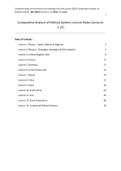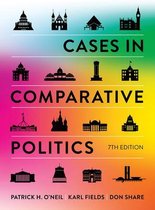Class notes
Comparative Analysis of Political Systems Lecture Notes (Lectures 1-13) - GRADE 6,0
- Course
- Institution
- Book
Combined notes on the lectures and readings from the course (2022) Comparative Analysis of Political Systems. INCLUDES lectures 1-13 (Total: 52 pages).
[Show more]




